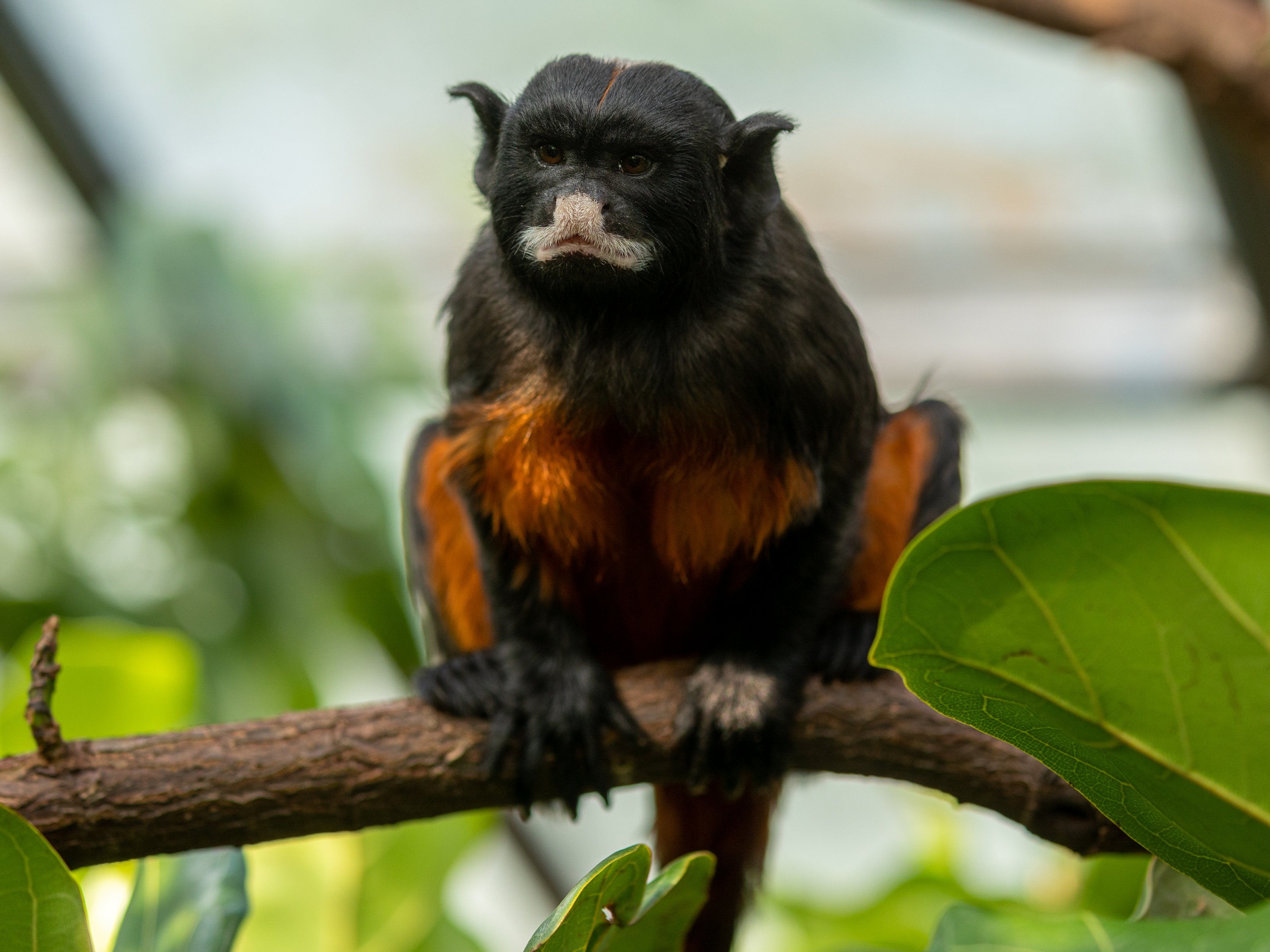
Station 31 Krallenaffen
Der Name ist hier Programm. Denn diese kleinen Äffchen haben Krallen statt Nägel an ihren Fingern und Zehen (mit Ausnahme der Großzehe). Und so klettern sie mühelos durch die Wälder, an dicken vertikalen Stämmen hinauf und suchen sogar kopfüber nach Nahrung. Sie kratzen die Rinde von Bäumen auf und laben sich an den leckeren Baumsäften. Diese Krallen sind wirklich zu vielem nütze!
Gemeinsam statt einsam ist die Devise - und das ist bei nahezu allen Affen der Fall. In Gruppen von 2 bis 15 Tieren springen die Krallenaffen leichtfüßig durchs Geäst, auch die Kleinsten lernen das schnell. Apropos Nachwuchs: Dieses Vergnügen ist nur den ranghöchsten Tieren der Gruppe vorbehalten. Sie bekommen in der Regel zweieiige Zwillinge, welche aber den gleichen genetischen Fingerabdruck besitzen. Die Aufzucht bedeutet einen hohen Energieaufwand für das Muttertier. Wie gut, wenn man nicht allein ist! Die Gruppe kümmert sich nämlich gemeinsam um die Kinderschar.
Station 31 Kosmani
Název zde mluví za vše. Protože tyto malé opice mají na rukou a nohou (kromě palce u nohy) místo nehtů drápy. A tak bez námahy šplhají lesy, po silných kolmých kmenech a dokonce bezhlavě hledají potravu. Otevírají kůru stromů a hodují na lahodných stromových šťávách. Ty drápy jsou užitečné opravdu hodně! Společně místo sami je heslo – a to je případ téměř všech opic. Ve skupinách po 2 až 15 zvířatech kosmani lehce proskakují větvemi, rychle se to naučí i ti nejmenší. Když už mluvíme o potomcích: Toto potěšení je vyhrazeno pouze pro nejvýše postavená zvířata ve skupině. Obvykle dostanou dvojčata, ale mají stejný genetický otisk. Odchov znamená pro matku vysoký energetický výdej. Jak dobré nebýt sám! Skupina se o děti stará společně.
Station 31 Marmosets
The name says it all here. Because these little monkeys have claws instead of nails on their fingers and toes (except for the big toe). And so they climb effortlessly through the forests, up thick vertical trunks and even search headlong for food. They scratch open the bark of trees and feast on the delicious tree juices. Those claws are really useful for a lot! Together instead of alone is the motto - and that is the case with almost all monkeys. In groups of 2 to 15 animals, the marmosets jump lightly through the branches, even the smallest learn this quickly. Speaking of offspring: This pleasure is only reserved for the highest-ranking animals in the group. They usually get fraternal twins, but they have the same genetic fingerprint. The rearing means a high energy expenditure for the mother animal. How good not to be alone! The group takes care of the children together.